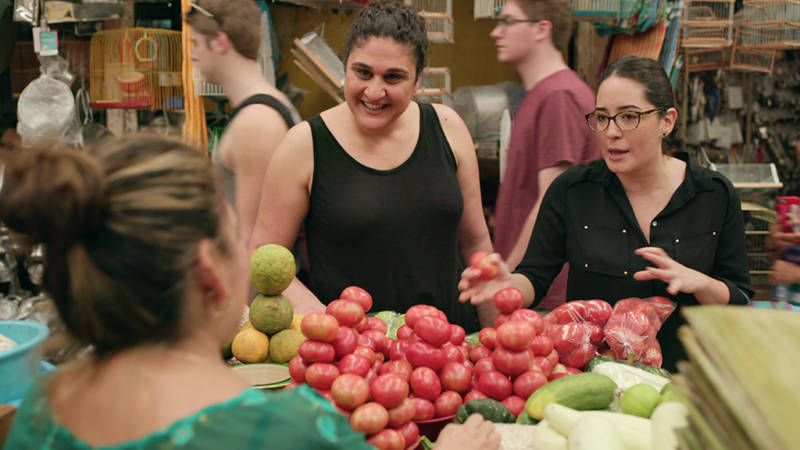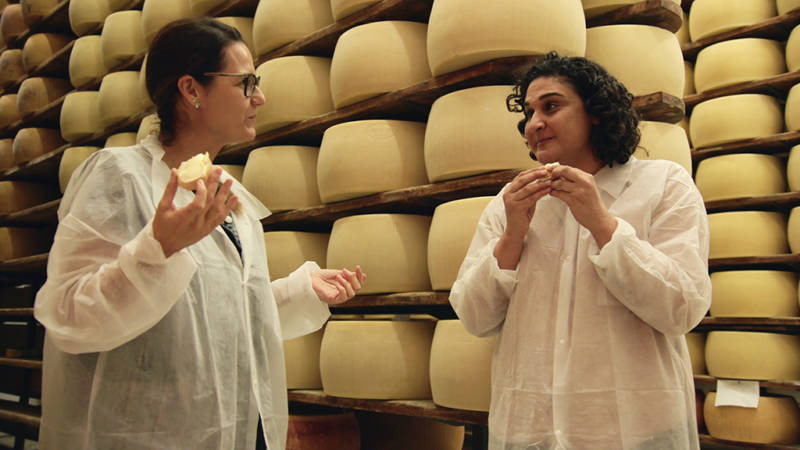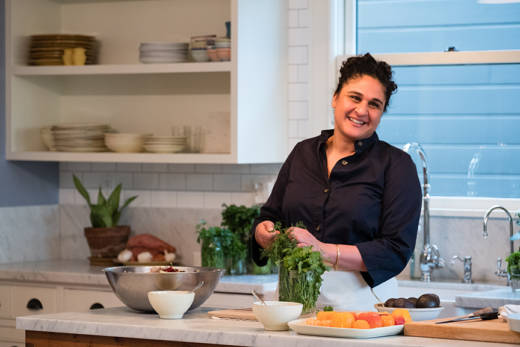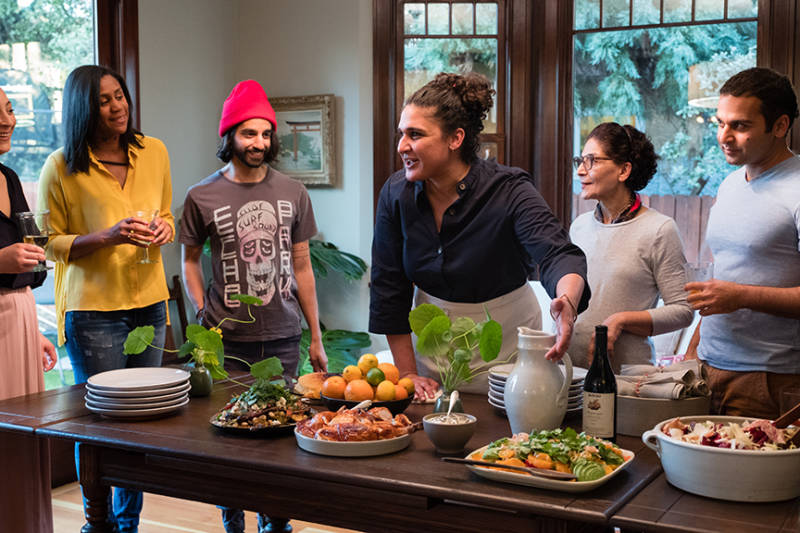As we sit down on Samin Nosrat’s cozy sofa to talk about her new Netflix series Salt, Fat, Acid, Heat, the former Chez Panisse chef not only compliments my hands but reaches out to touch them. Like the person you see on screen, she’s a tactile, disarming presence. She’s also fearless when tasting food she’s unfamiliar with. In each episode, Nosrat travels somewhere abroad in order to enrich her understanding of a people and their approach to cooking. Whether she’s gathering olives with Italian farmers or wandering through a fish market in Japan, the people she encounters are invariably charmed by her curiosity and genuine sense of adventure.
The television series is based on her bestselling book of the same name. When Salt, Fat, Acid, Heat: Mastering the Elements of Good Cooking was published in 2017, I heard Evan Kleiman, the host of KCRW’s Good Food, give Nosrat her stamp of approval (always a good sign). And I suddenly saw it everywhere around the Bay Area, in bookstores and sitting open on kitchen countertops. Salt, Fat, Acid, Heat does contain recipes but they’re meant to supplement the 17 years of research and experience that Nosrat put into crafting a book about how to cook rather than simply offering a variation on spaghetti bolognese or lemon bars.

She came up with her magical formula — repeat “salt, fat, acid, heat” often enough and it sounds like an incantation — by observing the way the chefs ran the Chez Panisse kitchen. As she was learning her trade as an apprentice there, she described the daily routine, “Every day we'd sit down and have a menu meeting. In the café upstairs the chef would print out a blank form every day that had a spot for what the daily pizza was going to be for lunch and dinner, what the soup was going to be, the entrée from the grille, the braise. Some days it was beef bourguignon. Other days we were making something Indian inspired, or Italian or Spanish.”
At first, Nosrat wondered how everyone could remember so many recipes. She admits that “it took an embarrassingly long time for me to realize, oh, braising is a formula.” All they were doing, depending on the day and the chef’s whim at the time was, “changing the wine or changing the acid. We're changing the bed of herbs and the aromatics at the bottom — but it doesn't matter if you're Indian or you're Greek, Spanish or French.” From this aha moment, she understood something universal about the culinary arts, regardless of what country’s spices you use. As she writes in the book’s opening sentence, “Anyone can cook anything and make it delicious.” That is, if you apply Nosrat’s four essential cooking principles.

Each episode of the TV adaptation devotes an hour to each principle. Nosrat travels to Japan in “Salt,” Italy in “Fat,” Mexico for “Acid” and back to Berkeley for “Heat.” She’s as interested in the cuisine — tasting seaweed, pasta or tacos — as she is in the behind-the-scenes process of how the dishes are made. We hear her laughter echo across an Italian valley as she delights in gathering olives. She discovers a store that carries so many varieties of salt it actually demonstrates the idea of infinity. And we get a vicarious thrill from her as she tastes a spicy hot salsa and cools her palate down with a beer.

